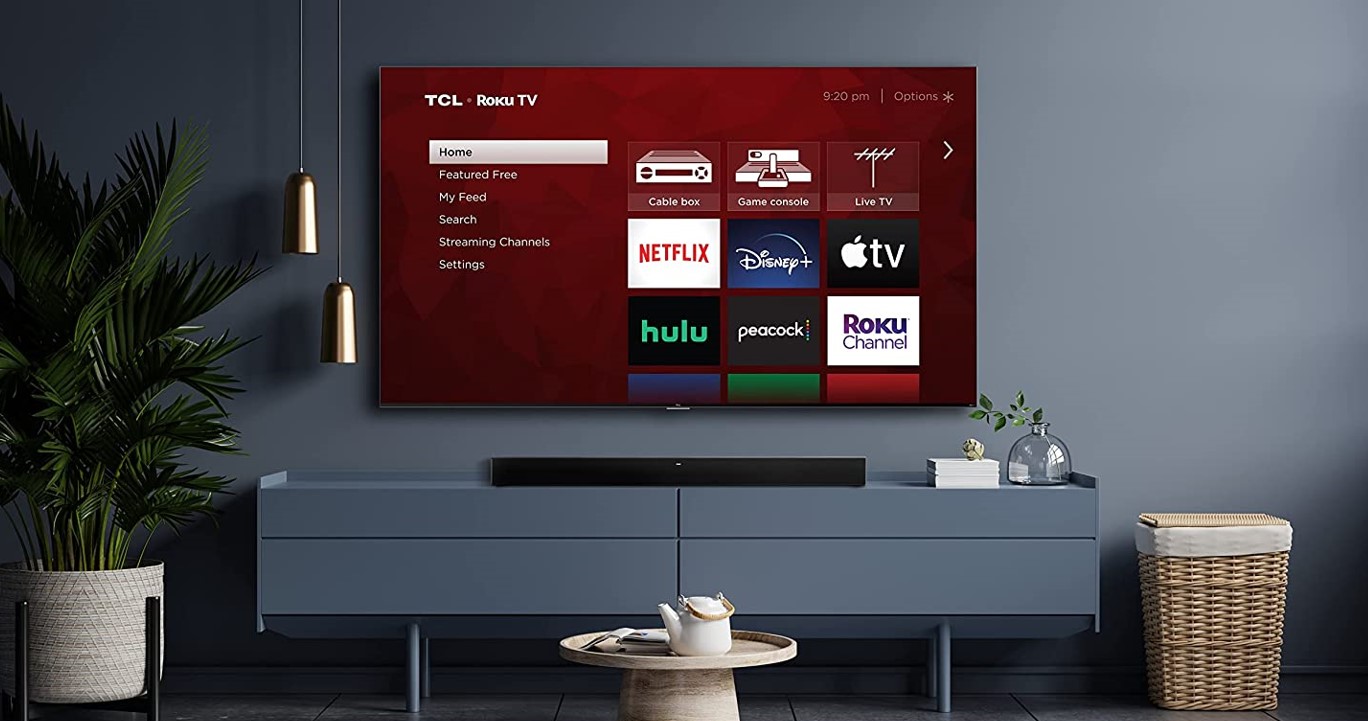Affiliate links on Android Authority may earn us a commission. Learn more.
Roku vs Chromecast: Which streaming platform is right for you?
Published onJuly 7, 2023
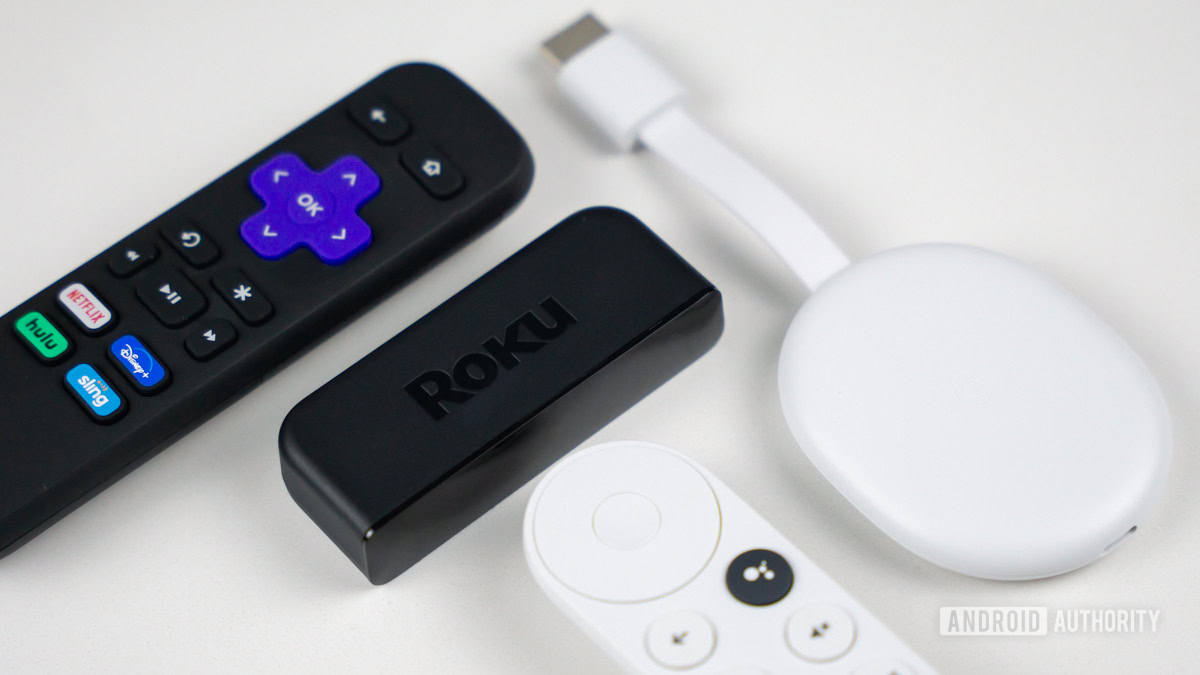
While there are a lot of media streaming devices on the market, the chief rivalry in the budget space is arguably between Roku and Google’s Chromecast. You can have a great experience with either platform, so here’s what you need to know before making the leap.
Roku vs Chromecast: Product lineups
On the surface, Roku seems to have a gigantic lineup compared with Google, but most of its standalone devices (we’re ignoring integrated Roku or Google TVs, here) are just variants of a few core products.
Roku streamers
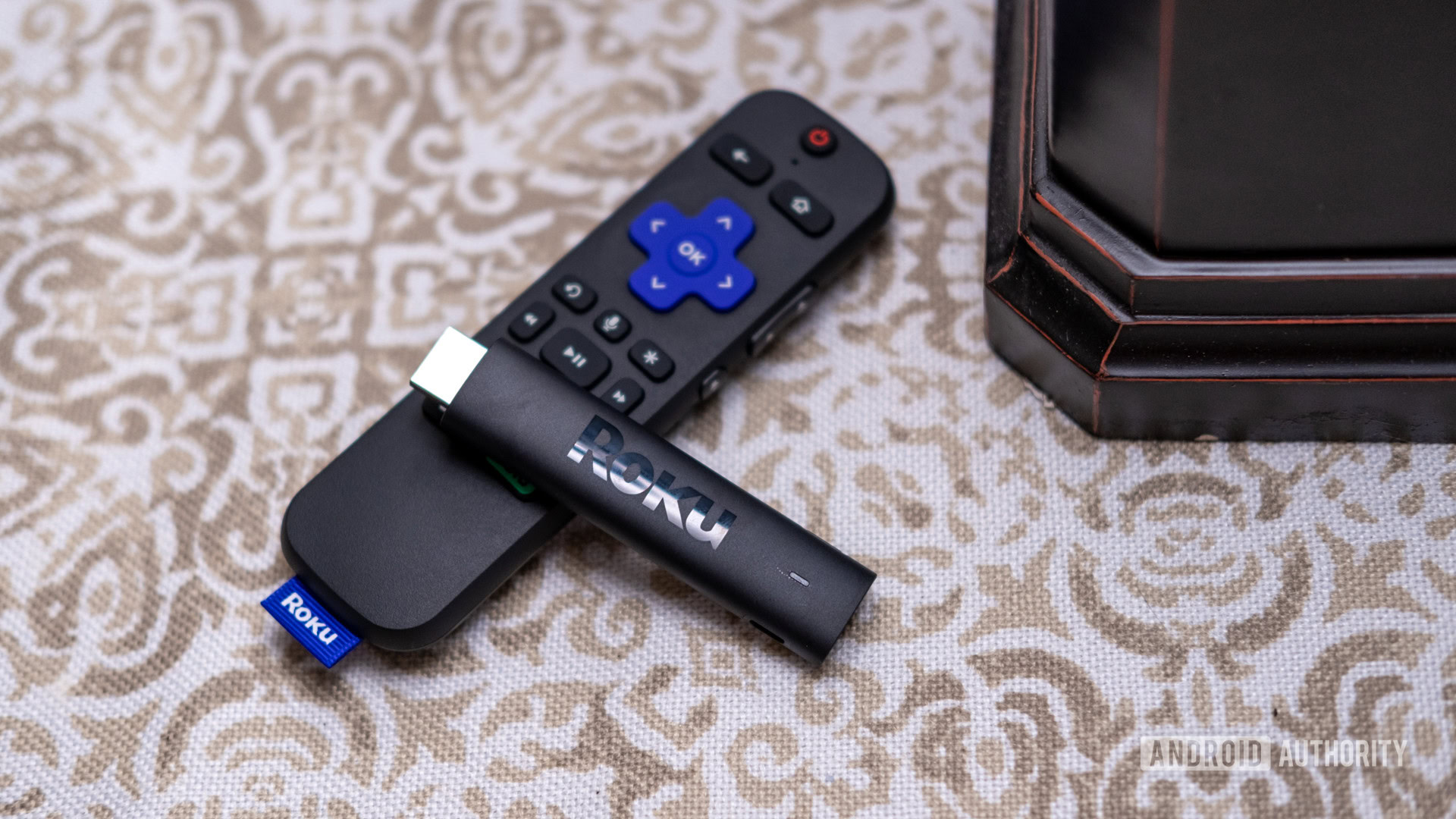
- Roku Express (Amazon): The cheapest model at $30, it comes with an infrared (“simple”) remote, and lacks support for 4K HDR. You can’t do Dolby or DTS audio unless you use HDMI passthrough, and it lacks volume leveling or night mode options.
- Roku Express 4K: This one is increasingly hard to find, but it’s the cheapest with both 4K and HDR, the latter in the form of HDR10 Plus. Audio format support is largely the same, but you do get volume leveling and night modes.
- Roku Express 4K Plus (Amazon): The only difference versus the regular Express 4K is the addition of Roku’s voice remote, which makes search easier and includes its own power and volume buttons.
- Roku Streaming Stick 4K (Amazon): The advantage of Streaming Sticks is that you can plug them directly into an HDMI port, and power them via a wall adapter or a TV’s own USB port. Feature-wise the Streaming Stick 4K builds on the Express 4K Plus by adding Dolby Vision to its HDR formats, and extending Wi-Fi range, which may come in handy if your router is nowhere near your TV.
- Roku Streaming Stick 4K Plus (Amazon): Going with the Plus gets you the Voice Remote Pro. That includes a headphone jack for private listening, customizable shortcut buttons, and a finder function if you lose it in the couch cushions. The remote is rechargeable too, so you won’t burn through batteries.
- Roku Ultra LT (Amazon): The main reason to go with an Ultra is performance — you get Roku’s fastest processor, its best Wi-Fi, best HDR compatibility, and an Ethernet port if you want maximum bandwidth. The Ultra LT only comes with Roku’s standard voice remote, though you do get the option of private listening through Bluetooth or the Roku mobile app. The LT is harder to find these days, but if you’re determined, you can still get one via Amazon or Walmart.
- Roku Ultra (Amazon): This is the top of the line if you don’t want integrated speakers. Upgrades over the LT include the Voice Remote Pro, Dolby Atmos surround sound, and private listening via the remote as well as Bluetooth and the Roku app. If you’ve got media on a USB drive, you can plug it directly into the set-top.
- Roku Streambar (Amazon): The Streambar is effectively an Ultra built into a soundbar, upgrading your TV’s audio and streaming tech simultaneously. Accordingly there are HDMI, USB, and optical ports, as well as improved audio options, namely speech enhancement and Dolby Audio processing. There are some odd sacrifices — you don’t get Dolby Atmos, and HDR is limited to HDR10 (not HDR10 Plus). You also only get Roku’s standard voice remote, limiting private listening to Bluetooth and the Roku app.
- Roku Streambar Pro (Amazon): The major upgrade here is sound quality. Whereas the regular Streambar uses four 1.9-inch drivers, the ones in the Pro are sized at 2.5 inches, giving them more punch. An upgraded remote adds a headphone jack to private listening options, as well as customizable shortcut buttons and a finder function through the Roku app. Oddly enough the Pro doesn’t expand HDR support, or enable any form of surround sound. At least without buying additional Roku speakers, that is, but that’s true of the regular Streambar too.
Chromecast streamers
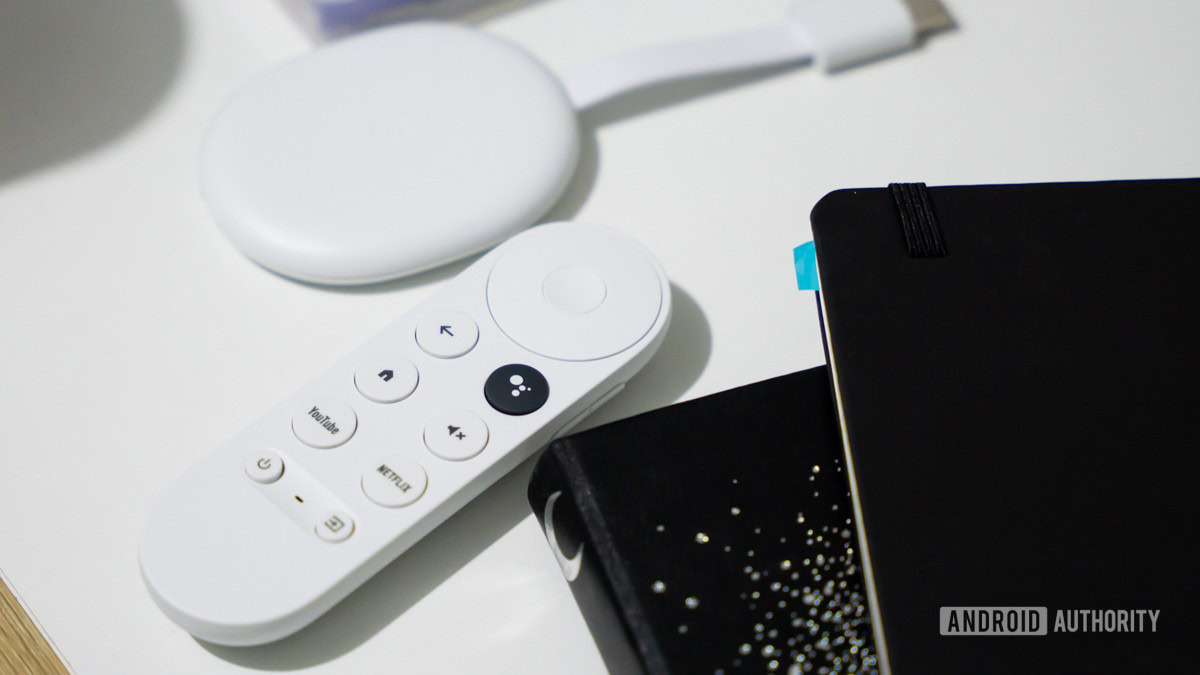
- Chromecast with Google TV HD (Amazon): Google TV is an enhanced version of Android TV. The base $30 Chromecast dongle limits resolution to 1080p, but does support HDR in the form of HDR10 Plus and HLG. Its remote offers built-in Google Assistant.
- Chromecast with Google TV 4K (Amazon): Largely identical to the HD, this upgrade adds 4K and Dolby Vision for the best possible picture. You can also buy it in “sky” or “sunrise” colors, not just the “snow” (white) of the HD.
Roku vs Chromecast: Software
Roku
Roku devices are based on Roku OS, which is relatively simple-looking compared to other streaming platforms, but that’s actually a benefit — it’s easy to learn, and runs smoothly on any recent hardware. There are several key features:
- The Channel Store is where you go to find apps, since Roku refers to everything as “channels” regardless of whether it involves video, audio, or gaming. Confusion aside, the Store hosts over 4,000 titles, covering most major services and many niche options.
- Voice search is deeply integrated into the platform, using either the Roku app or compatible remotes. It shows an array of viewing options in results, including subscriptions, purchases, and rentals.
- In the US, UK, Canada, and Mexico, The Roku Channel offers a mix of live and on-demand programming, most of it free but ad-supported. In some cases you may be able to subscribe to outside services (like Showtime or Shudder) through the Channel, which are then centrally billed to your Roku account.
- The Roku app serves many purposes, including finding and installing channels, and controlling devices connected to the same Wi-Fi network. It’s your best friend if you can’t find your physical remote.
- In the US, Roku has partnered with Wyze to sell smart home accessories like lights, security cameras, and video doorbells. While you can use an app, Amazon Alexa, or Google Assistant for control, the novelty here is support within Roku OS. If someone rings the doorbell, for instance, you’ll get an alert on your TV and the ability to tune in directly.
- There’s a limited amount of streaming control through third-party platforms including Alexa, Apple HomeKit, and Google Assistant. If you link an Echo speaker to a Roku device, for example, saying “Alexa, open YouTube” will both turn the Roku on and launch the YouTube app.
- A Live TV Zone directs you to live programming. New with Roku OS 12 is a US-only Local News option, and a Premium Subscriptions section for signing up to paid live services.
- Another Roku OS 12 addition is an improved Continue Watching row (under What to Watch) that makes it easier to resume viewing titles on services like Netflix, Max, and Prime Video.
Chromecast
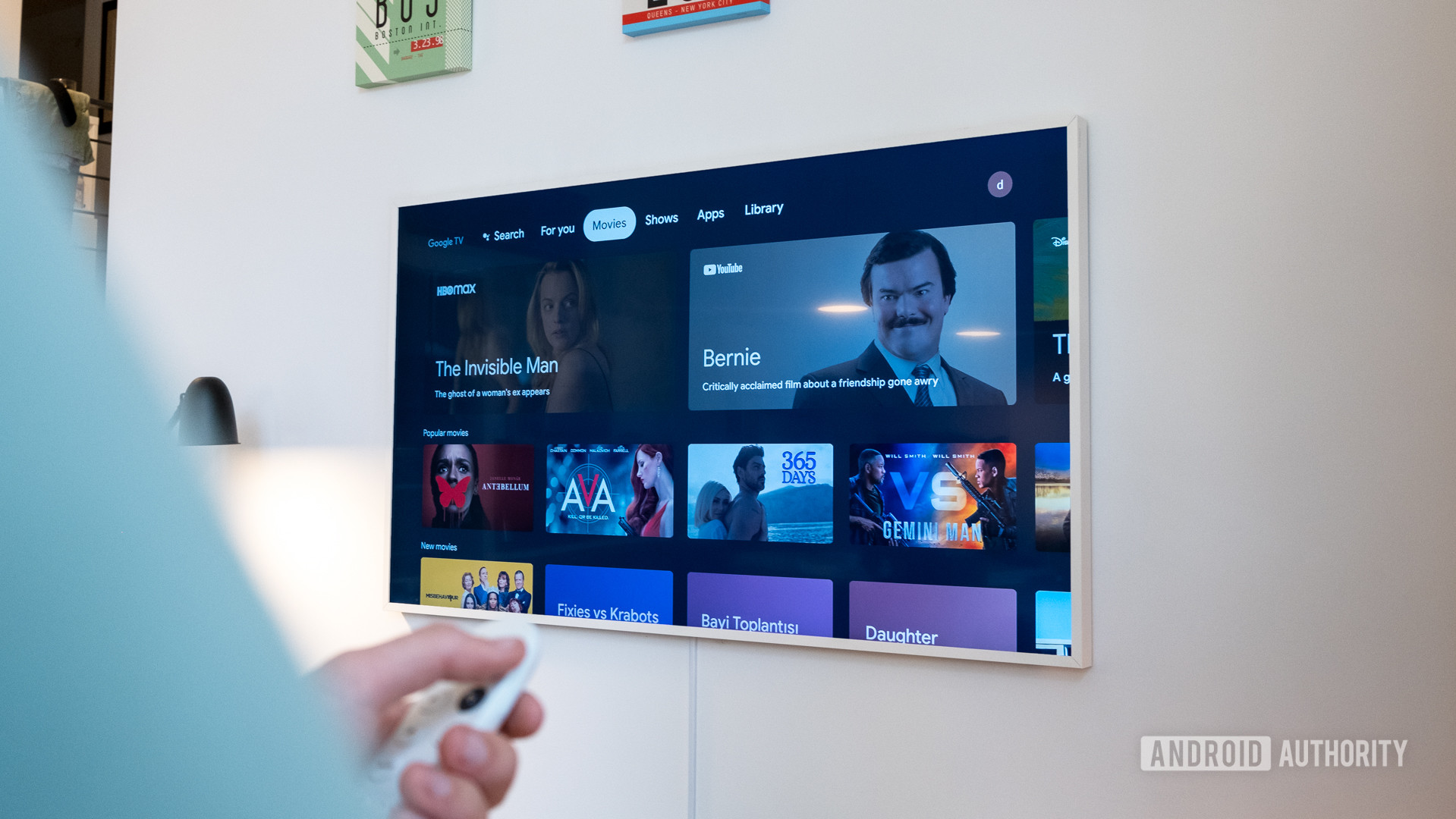
Google TV is visually slicker than Roku OS, but also has a number of functional features to brag about:
- The homescreen automatically groups movies and shows according to your habits, likewise offering recommendations.
- There’s a centralized watchlist, which makes it easy to add items from multiple services for later viewing. Roku has an equivalent feature called the Save List, but Google still has the edge, not the least because you can add items from any device signed into Google Search on the web.
- Google Assistant is a big one. While Roku devices offer limited integration with Assistant, Alexa, and HomeKit, you get full control of a Chromecast from any device with Assistant installed, including smart speakers and displays. Accordingly, that maximizes possibilities in smart home automation — imagine a “Hey Google, it’s movie night” command triggering a search for action movies while simultaneously lowering the blinds, cranking speaker volume, and dimming the lights to a faint orange glow.
- Google Cast was the original Chromecast’s raison d’être, and while that technology is now present on many other devices (Rokus included), you’re guaranteed to get full compatibility with Google hardware, including moving media from room to room with your voice.
- Extensive parental controls will only matter to some people, but through tools like Family Link you can limit app and media activity, including setting bedtimes to keep kids from streaming all night.
- As you’d expect, Chromecasts are designed with hooks for Google services such as Google Photos and YouTube TV. In fact they’re the only way you can get a dedicated YouTube Music app on non-Google TVs, though you can always just play tracks in the primary YouTube app.
Roku vs Chromecast: Content

Most things you want to watch on Roku can be found on a Chromecast, and vice versa. There are some notable exceptions — Twitch is available on Android/Google TV but not Roku, for example — but you’re not going to be wanting for major services like Netflix, Max, or Spotify. Check the availability of your favorites before committing to a purchase.
Both platforms have access to YouTube, YouTube TV, and YouTube Music, though as we indicated, listening to Music on Roku involves using the main YouTube app. Roku only really sets itself apart by way of the Roku Channel, as well as host of extremely niche apps for content like church services or old cartoons. You probably won’t miss those on a Chromecast, and even the Roku Channel can be hit-or-miss, sometimes forcing you to sift for a while to find quality material. We wouldn’t depend on it as our only source of video.
Neither platform is good for gaming. Google killed off Stadia cloud games in January 2023.
The verdict
Honestly, in terms of media consumption, you really can’t really go wrong with either platform so long as you choose a device with specs that match your TV. Prices are similar, and the content available is largely the same. You’ll just be kicking yourself if you buy something like a Roku Express or Chromecast HD and find you can’t take advantage of 4K.
With that out of the way, matters really come down to feature and interface preferences. Google TV may look slicker, but Roku OS is about as straightforward as you can get, and some people don’t want Google’s curation. Roku devices may sometimes even run faster, given that Chromecasts can slow down if they’re overloaded with app data.
A Chromecast 4K should probably be your first choice if you care about Google Assistant, or you otherwise rely heavily on Google services — which is likely if you follow Android Authority. You’ll get maximum integration with Android, Google Assistant, and Google Home.
The one frustration is that Google has yet to enable TV audio sync with its Nest Audio speaker, whereas Fire TV users can pair with Echo devices, and Apple TV 4K owners can pair with HomePods. A bundle with a Chromecast and a pair of linked Nest Audios would be a killer entertainment setup.
